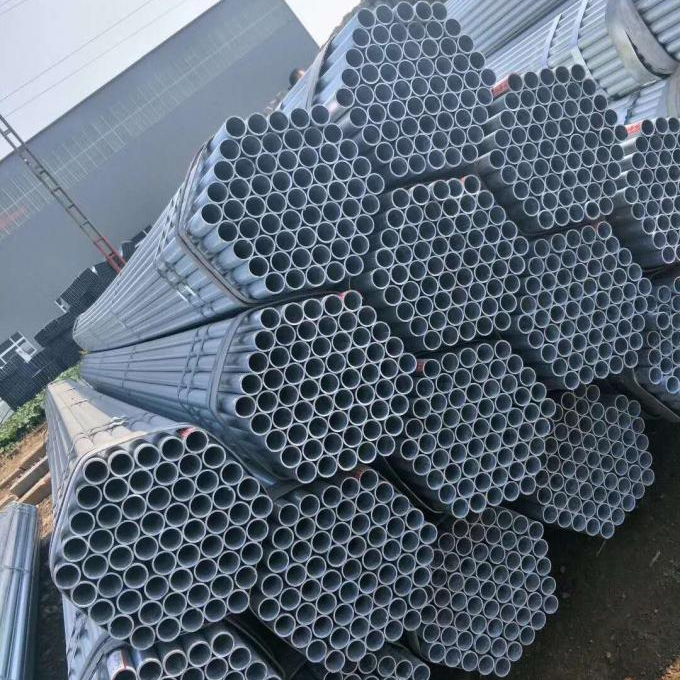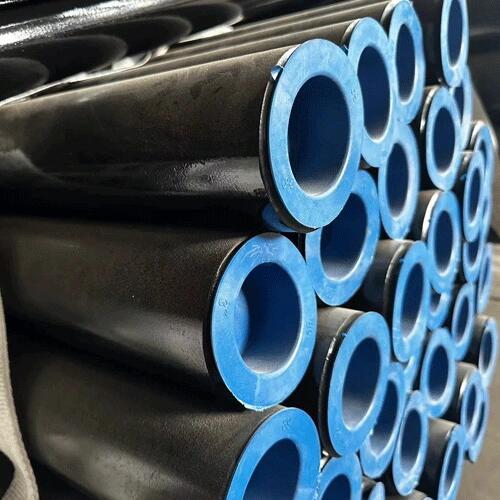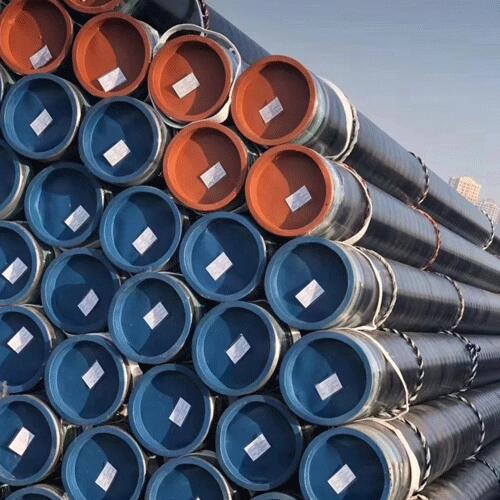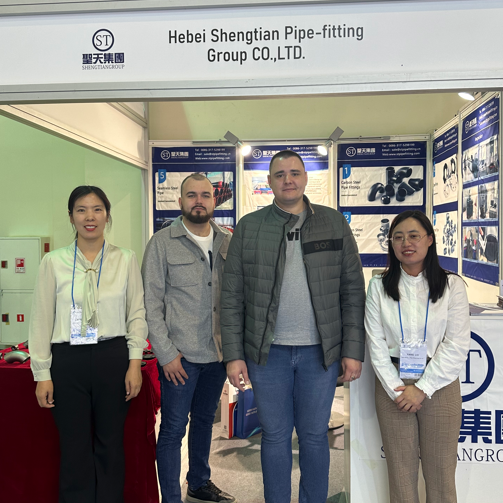API 5L Black steel pipe gets its name from the dark, protective iron oxide coating on its surface, which gives it its characteristic black color. It has the advantages of being strong, durable, easy to shape, and cheap. However, black metal pipe has a fatal disadvantage that it is prone to rust, because impurity particles such as corrosive gases, water vapor, and microchlorine compounds contained in the atmosphere are very small in diameter and can pass through the filter of a general air compressor and are compressed.
Make the compressed air acidic and corrode the inner wall of the steel pipe, which will affect the quality of the compressed air produced and require frequent replacement. Therefore, Black metal tubing is suitable for industries that do not have high requirements for compressed air quality, have limited budgets, and do not produce corrosive gases.
What other types of pipe to use for air lines?
(1) API 5L Galvanized pipe
API 5L Galvanized seamless and welded pipes are corrosion-resistant, rust-proof, and have a smooth and beautiful surface, so they are also chosen by many air compressor users. However, galvanized pipes are not completely rust-proof. If the surface galvanized layer is damaged, galvanized pipes will also rust and corrode. The performance and price of galvanized pipes are between carbon steel pipes and stainless steel pipes. Therefore, if you have requirements for compressed air quality and do not have the budget to use stainless steel pipes, you can choose to use galvanized pipes.
Hot-dip galvanizing tube reacts molten metal with an iron matrix to produce an alloy layer, thereby combining the matrix and the coating.Hot-dip galvanizing is to pickle the steel pipe first. In order to remove the iron oxide on the surface of the steel pipe, after pickling, it is cleaned in an aqueous solution of ammonium chloride or zinc chloride or a mixed aqueous solution of ammonium chloride and zinc chloride, and then sent to in a hot dip plating tank. Hot-dip galvanizing has the advantages of uniform coating, strong adhesion, and long service life. The hot-dip galvanized steel pipe matrix undergoes complex physical and chemical reactions with the molten plating bath to form a corrosion-resistant zinc-iron alloy layer with a tight structure. The alloy layer is integrated with the pure zinc layer and the steel pipe matrix. Therefore, it has strong corrosion resistance.
(2) Aluminum alloy pipe
The principle of anti-rust for aluminum alloy pipes is that the dense aluminum oxide on the surface is extremely difficult to react with the outside world, thus preventing corrosion. More importantly, aluminum alloy materials are cheap, have low hardness, and are easy to process. However, aluminum alloys also have disadvantages, that is, if the aluminum oxide on the surface is damaged and the internal aluminum elements come into contact with the air, they will also rust. The biggest advantage of aluminum alloy is that it is light enough, which is particularly advantageous when there are lightweight requirements and specific corrosive environments, such as salt water environments.
(3) Stainless steel pipes
Stainless steel pipes are generally the highest quality pipe material on the market and are commonly used in high-standard industries such as medicine and precision electronics. Stainless steel pipes have strong anti-rust and anti-corrosion properties, strong pressure resistance, moisture resistance and high temperature resistance. Such compressed air pipelines are reliable, have long service life, reduce maintenance costs, and allow users to use stable and clean compressed air.
3.Is 3/4" Schedule 40 pipe OK for 200 PSI air?
Using Schedule 40 3/4" black pipe for a 200 PSI air compressor system depends on several factors, including the length of the pipe run, the type of fittings used, and the specific requirements of the compressor system. Schedule 40 black pipe is commonly used used for compressed air systems, but it's important to ensure that it can handle the pressure and flow requirements of your particular setup.
In general,API 5L Gr.B Schedule 40 Seamless Carbon Steel Line Pipe is rated for a maximum working pressure of around 150 PSI at room temperature. However, this rating can vary depending on factors such as temperature, pipe size, and application.
 How to apply hot dipped galvanized steel pipe?
How to apply hot dipped galvanized steel pipe?
 Why should Seamless steel pipes be epoxy powder coated?
Why should Seamless steel pipes be epoxy powder coated?
 ASTM A106 Thick-walled steel pipe production steps
ASTM A106 Thick-walled steel pipe production steps
 Shengtian Group successfully participated in the Russian Oil and Gas Exhibition
Shengtian Group successfully participated in the Russian Oil and Gas Exhibition